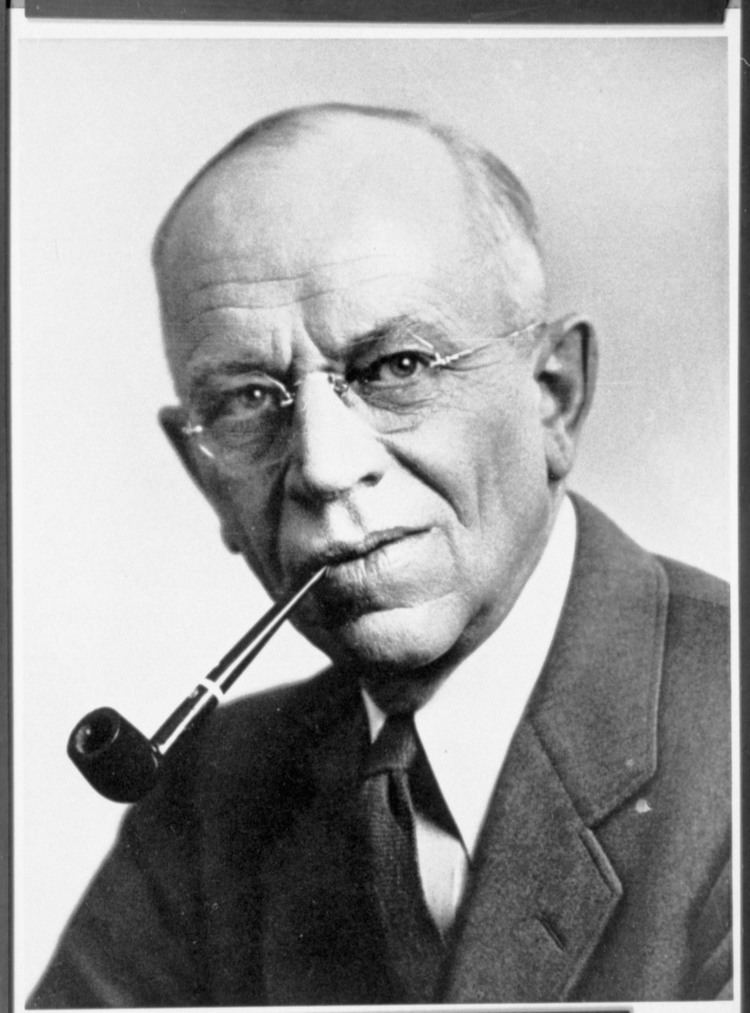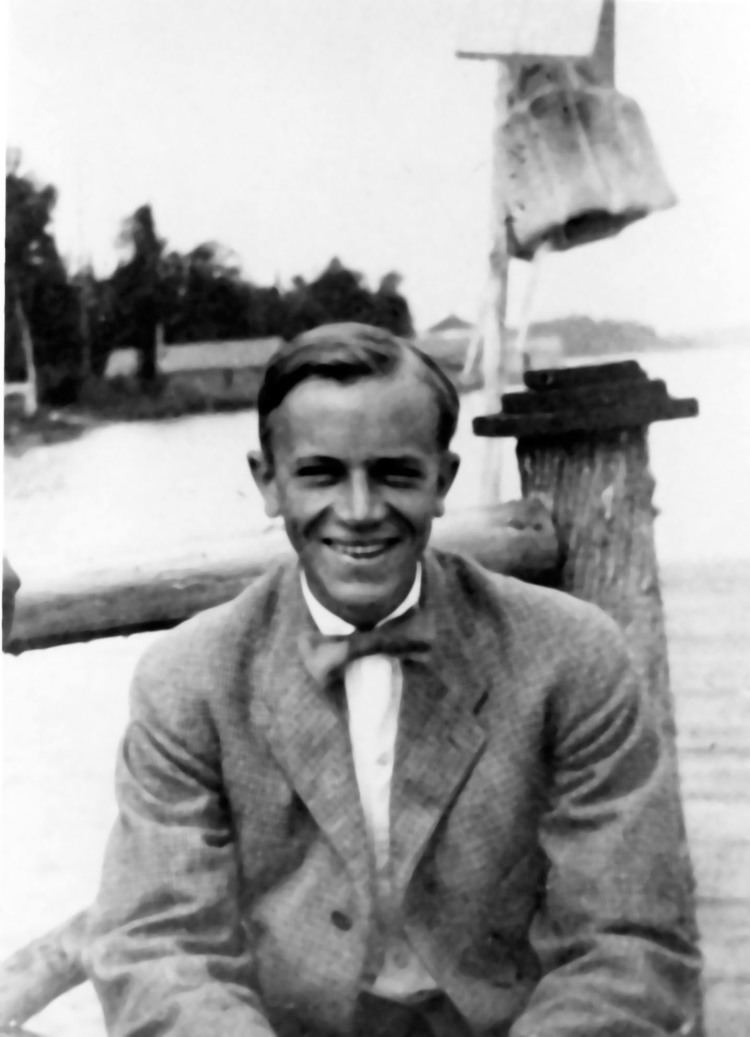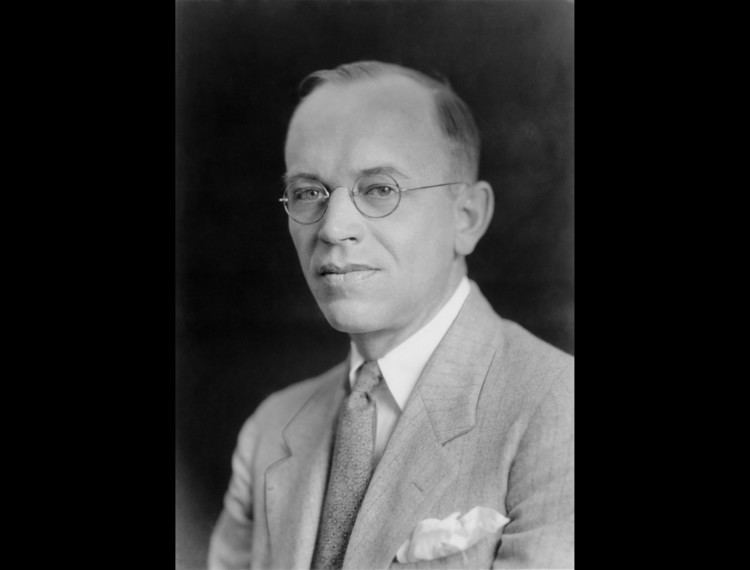Nationality American Role Author Name Aldo Leopold | ||
 | ||
Born January 11, 1887Burlington, Iowa ( 1887-01-11 ) Children Luna Leopold, Estella Leopold, A. Starker Leopold, Nina Leopold Bradley, A. Carl Leopold Parents Carl Leopold, Clara Starker Books A Sand County Almanac, Round River, Game management, The River of the Mother of, For the Health of the Land Similar People Land ethic, Rachel Carson, J Baird Callicott, Luna Leopold, John Muir | ||
Aldo leopold the conservation movement
Aldo Leopold (January 11, 1887 – April 21, 1948) was an American author, philosopher, scientist, ecologist, forester, conservationist, and environmentalist. He was a professor at the University of Wisconsin and is best known for his book A Sand County Almanac (1949), which has sold more than two million copies.
Contents
- Aldo leopold the conservation movement
- Rayappa kasi land ethics of aldo leopold
- Early life
- Schooling
- Career
- Ideas
- Nature writing
- A Sand County Almanac
- Land Ethic
- Legacy
- Works
- References

Leopold was influential in the development of modern environmental ethics and in the movement for wilderness conservation. His ethics of nature and wildlife preservation had a profound impact on the environmental movement, with his ecocentric or holistic ethics regarding land. He emphasized biodiversity and ecology and was a founder of the science of wildlife management.

Rayappa kasi land ethics of aldo leopold
Early life

Rand Aldo Leopold was born in Burlington, Iowa, on January 11, 1887. His father, Carl Leopold, was a businessman who made walnut desks; and his mother, born Clara Starker, was Carl's first cousin. Charles Starker, father of Clara and uncle of Carl, was a German immigrant, educated in engineering and architecture. Rand Aldo was named after two of Carl's business partners—C. W. Rand and Aldo Sommers—although the "Rand" was eventually dropped. The Leopold family included younger siblings Mary Luize, Carl Starker, and Frederic. Leopold's first language was German, although he mastered English at an early age.

Aldo Leopold's early life was highlighted by the outdoors. Carl would take his children on excursions into the woods and taught his oldest son woodcraft and hunting. Aldo showed an aptitude for observation, spending hours counting and cataloging birds near his home. Mary would later say of her older brother, "He was very much an outdoorsman, even in his extreme youth. He was always out climbing around the bluffs, or going down to the river, or going across the river into the woods." He attended Prospect Hill Elementary, where he ranked at the top of his class, and then, the overcrowded Burlington High School. Every August, the family vacationed in Michigan at the forested Les Cheneaux Islands in Lake Huron, which the children took to exploring.
Schooling
In 1900, Gifford Pinchot, who oversaw the newly implemented Division of Forestry in the Department of Agriculture, donated money to Yale University to begin one of the nation's first forestry schools. Hearing of this development, the teenage Leopold decided on forestry as a vocation. His parents agreed to let him attend The Lawrenceville School, a preparatory college in New Jersey in order to improve his chances of admission to Yale. The Burlington High School principal wrote in a reference letter to the headmaster at Lawrenceville that Leopold was "as earnest a boy as we have in school... painstaking in his work.... Moral character above reproach." He arrived at his new school in January 1904, shortly before he turned seventeen. He was considered an attentive student, although he was again drawn to the outdoors. Lawrenceville was suitably rural, and Leopold spent much time mapping the area and studying its wildlife. Leopold studied at the Lawrenceville School for a year, during which time he was accepted to Yale University. Because the Yale School of Forestry granted only graduate degrees, he first enrolled in Sheffield Scientific School's preparatory forestry courses for his undergraduate studies. While Leopold was able to explore the woods and fields of Lawrenceville daily, sometimes to the detriment of his studying, in Yale he had little opportunity to do so; his studies and social life engagements made his outdoor trips few and far between.
Career
In 1909, Leopold was assigned to the Forest Service's District 3 in the Arizona and New Mexico territories. At first, he was a forest assistant at the Apache National Forest in the Arizona Territory. In 1911, he was transferred to the Carson National Forest in northern New Mexico. Leopold's career, which kept him in New Mexico until 1924, included developing the first comprehensive management plan for the Grand Canyon, writing the Forest Service's first game and fish handbook, and proposing Gila Wilderness Area, the first national wilderness area in the Forest Service system.
On April 5, 1923, he was elected an associate member (now called "professional member") of the Boone and Crockett Club, a wildlife conservation organization founded by Theodore Roosevelt and George Bird Grinnell.
In 1924, he accepted transfer to the U.S. Forest Products Laboratory in Madison, Wisconsin and became an associate director.
In 1933, he was appointed Professor of Game Management in the Agricultural Economics Department at the University of Wisconsin–Madison, the first such professorship of wildlife management.
Leopold lived in a modest two-story home close to the University of Wisconsin–Madison campus with his wife and children. His children followed in his footsteps as teachers and naturalists: Aldo Starker (1913–1983) was a wildlife biologist and professor at UC Berkeley; Luna B. Leopold (1915–2006) became a hydrologist and geology professor at UC Berkeley; Nina Leopold Bradley (1917–2011) was a researcher and naturalist; Aldo Carl Leopold (1919–2009) was a plant physiologist, who taught at Purdue University for 25 years; and daughter Estella Leopold (b. 1927) is professor emeritus at the University of Washington, a noted botanist and conservationist. Today, Leopold's home is an official landmark of the city of Madison.
He purchased eighty acres in the sand country of central Wisconsin. The once-forested region had been logged, swept by repeated fires, overgrazed by dairy cows, and left barren. There he put his theories to work in the field and eventually wrote his best-selling A Sand County Almanac (1949), finished just prior to his death. Leopold died of a heart attack while battling a wild fire on a neighbor's property.
Ideas
Early on, Leopold was assigned to hunt and kill bears, wolves, and mountain lions in New Mexico. Local ranchers hated these predators because of livestock losses, but Leopold came to respect the animals. He developed an ecological ethic that replaced the earlier wilderness ethic that stressed the need for human dominance. Rethinking the importance of predators in the balance of nature resulted in the return of bears and mountain lions to New Mexico wilderness areas.
By the early 1920s, Leopold had concluded that a particular kind of preservation should be embraced in the national forests of the American West. He was prompted to this by the rampant building of roads to accommodate the "proliferation of the automobile" and the related increasingly heavy recreational demands placed on public lands. He was the first to employ the term "wilderness" to describe such preservation. Over the next two decades he added ethical and scientific rationales to his defense of the wilderness concept. In one essay, he rhetorically asked "Of what avail are forty freedoms without a blank spot on the map?" Leopold saw a progress of ethical sensitivity from interpersonal relationships, to relationships to society as a whole, to relationships with the land, leading to a steady diminution of actions based on expediency, conquest, and self-interest. Leopold thus rejected the utilitarianism of conservationists such as Gifford Pinchot and Theodore Roosevelt.
By the 1930s, Leopold was the nation's foremost expert on wildlife management. He advocated the scientific management of wildlife habitats by both public and private landholders rather than a reliance on game refuges, hunting laws, and other methods intended to protect specific species of desired game. In his 1933 book Game Management, Leopold defined the science of wildlife management as "the art of making land produce sustained annual crops of wild game for recreational use," but as Curt Meine has pointed out, he also viewed it as a technique for restoring and maintaining diversity in the environment. The concept of "wilderness" also took on a new meaning; he no longer saw it as a hunting or recreational ground, but as an arena for a healthy biotic community, including wolves and mountain lions. In 1935, he helped found the Wilderness Society, dedicated to expanding and protecting the nation's wilderness areas. He regarded the society as "one of the focal points of a new attitude—an intelligent humility toward Man's place in nature." Science writer Connie Barlow says Leopold wrote eloquently from a perspective that today would be called Religious Naturalism.
Nature writing
Leopold's nature writing is notable for its simple directness. His portrayals of various natural environments through which he had moved, or had known for many years, displayed impressive intimacy with what exists and happens in nature. He offered frank criticism of the harm he believed was frequently done to natural systems (such as land) out of a sense of a culture or society's sovereign ownership over the land base – eclipsing any sense of a community of life to which humans belong. He felt the security and prosperity resulting from "mechanization" now gives people the time to reflect on the preciousness of nature and to learn more about what happens there, however, he also wrote, "Theoretically, the mechanization of farming ought to cut the farmer's chains, but whether it really does is debatable."
A Sand County Almanac
The book was published in 1949, shortly after Leopold's death. One of the well-known quotes from the book which clarifies his land ethic is,
A thing is right when it tends to preserve the integrity, stability, and beauty of the biotic community. It is wrong when it tends otherwise. (p.262)
The concept of a trophic cascade is put forth in the chapter, "Thinking Like a Mountain", wherein Leopold realizes that killing a predator wolf carries serious implications for the rest of the ecosystem — a conclusion that found sympathetic appreciation generations later:
In January 1995 I helped carry the first grey wolf into Yellowstone, where they had been eradicated by federal predator control policy only six decades earlier. Looking through the crates into her eyes, I reflected on how Aldo Leopold once took part in that policy, then eloquently challenged it. By illuminating for us how wolves play a critical role in the whole of creation, he expressed the ethic and the laws which would reintroduce them nearly a half-century after his death.
Land Ethic
In "The Land Ethic", a chapter in A Sand County Almanac, Leopold delves into conservation in "The Ecological Conscience" section. He wrote: "Conservation is a state of harmony between men and land." He noted that conservation guidelines at the time boiled down to: "obey the law, vote right, join some organizations, and practice what conservation is profitable on your own land; the government will do the rest." (p. 243–244)
Leopold explained:
"The land ethic simply enlarges the boundaries of the community to include soils, waters, plants, and animals, or collectively: the land.""This sounds simple: do we not already sing our love for and obligation to the land of the free and the home of the brave? Yes, but just what and whom do we love? Certainly not the soil, which we are sending helter-skelter down river. Certainly not the waters, which we assume have no function except to turn turbines, float barges, and carry off sewage. Certainly not the plants, of which we exterminate whole communities without batting an eye. Certainly not the animals, of which we have already extirpated many of the largest and most beautiful species. A land ethic of course cannot prevent the alteration, management, and use of these ‘resources,’ but it does affirm their right to continued existence, and, at least in spots, their continued existence in a natural state. In short, a land ethic changes the role of Homo sapiens from conqueror of the land-community to plain member and citizen of it. It implies respect for his fellow-members, and also respect for the community as such."Legacy
The Aldo Leopold Foundation of Baraboo, Wisconsin was founded in 1982 by Aldo and Estella Leopold's five children as a 501(c)3 not-for-profit conservation organization whose mission is "to foster the land ethic through the legacy of Aldo Leopold." The Aldo Leopold Foundation owns and manages the original Aldo Leopold Shack and Farm and 300 surrounding acres, in addition to several other parcels. Its headquarters is at the green-built Leopold Center, where it conducts educational and land stewardship programs. The foundation also acts as the executor of Leopold’s literary estate, encourages scholarship on Leopold, and serves as a clearinghouse for information regarding Leopold, his work, and his ideas. It provides interpretive resources and tours for thousands of visitors annually, distributes a curriculum about how to use Leopold's writing and ideas in environmental education, and maintains a robust website and numerous print resources. In 2012, in collaboration with the United States Forest Service, the foundation released the first high definition, full-length film about Leopold, entitled Green Fire: Aldo Leopold and a Land Ethic for Our Time. The film aired on public television stations across the nation and won a Midwest regional Emmy award in the documentary category.
The Aldo Leopold Wilderness was named after him in 1980.
The Leopold Center for Sustainable Agriculture was established in 1987 at Iowa State University in Ames, IA. It was named in honor of Aldo Leopold and over the last thirty years has pioneered new forms of sustainable agriculture practices.
The U.S. Forest Service established the Aldo Leopold Wilderness Research Institute at the University of Montana Missoula in 1993. It is "the only Federal research group in the United States dedicated to the development and dissemination of knowledge needed to improve management of wilderness, parks, and similarly protected areas."
The Aldo Leopold Legacy Trail System, a system of 42 state trails in the state of Wisconsin, was created in 2007.
An organization, The Leopold Heritage Group, is "dedicated to promoting the global legacy of Aldo Leopold in his hometown of Burlington, Iowa."
A charter school in Silver City, New Mexico was named after Leopold.
One of the dormitories at the U.S. Fish and Wildlife Service's National Conservation Training Center is named after Aldo Leopold.
